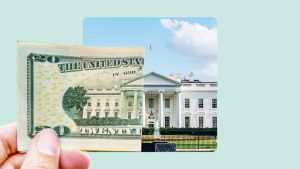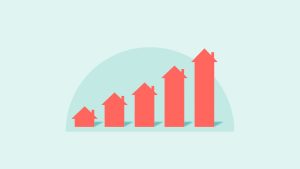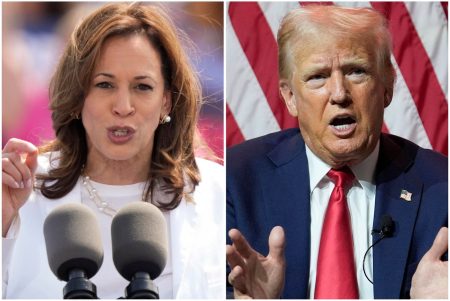Our writers and editors used an in-house natural language generation platform to assist with portions of this article, allowing them to focus on adding information that is uniquely helpful. The article was reviewed, fact-checked and edited by our editorial staff prior to publication.
Key takeaways
- Fixed expenses remain constant within a budget, while variable expenses may change regularly.
- Examples of fixed expenses include rent or mortgage payments, while variable expenses can include things like groceries or entertainment.
- Budgeting for both fixed and variable expenses is important, and the 50/30/20 rule can help allocate funds.
Part of creating a budget is distinguishing between fixed and variable expenses. Fixed expenses are costs that largely remain constant, such as your monthly rent or mortgage. Variable expenses, on the other hand, are costs that may vary or be unpredictable, such as a car repair or a medical bill.
Whether a given expense is fixed or variable, it’s important to be able to account for all expenditures accurately in your budget to help ensure you can cover your bills and build up your high-yield savings account each month.
Definition of fixed expenses
Fixed expenses are those that remain constant within your budget, although they may change occasionally. For example, you may switch to a new cell phone service provider, or your landlord may raise your rent.
Fixed expenses are paid at regular intervals and may vary slightly, change significantly or stay the same, depending on the type of expense. Monthly fixed expenses are common, although fixed expenses may also occur weekly, quarterly, twice a year and yearly. Knowing your bills’ intervals can help in budgeting. If you pay car insurance twice a year, for example, divide the payment premium by six to get the monthly cost and include that amount in your monthly budget.
Examples of fixed expenses
Examples of fixed expenses include:
- Rent or mortgage payments
- Car payments
- Other loan payments
- Insurance premiums
- Property taxes
- Phone and utility bills
- Child care costs
- Tuition fees
- Gym memberships
Definition of variable expenses
Variable expenses change regularly and may be directly influenced by the choices you make day to day. Unlike fixed expenses, variable expenses can be less predictable and more volatile, which isn’t to say that variable expenses aren’t necessary; many essentials fall into this category.
Because of their unpredictable nature, some households struggle to track and budget for variable expenses. Unless you add up every grocery receipt or rely on a budgeting app, you may not know how much you spend on food every month, for example, making it easy to overspend without realizing it. For help with budgeting, check out Bankrate’s home budget calculator, which allows you to enter your income and expenses and shows you how much money is left to save.
Some variable expenses can be more easily controlled than others. When purchasing clothing, for example, you can opt to buy cheaper items or wait for a sale to save money. Other variable expenses can’t be controlled, such as emergency medical expenses. If you get sick and need to see a doctor urgently, you may need to pay for some or all of the costs, depending on your health insurance coverage.
Examples of variable expenses
Common variable expenses include:
- Groceries and dining out
- Clothing
- Personal care
- Entertainment
- Gasoline
- Home and car repairs
- Medical bills
Budgeting for fixed and variable expenses
Budget for essential expenses first, such as housing, car payments and child care. Most essentials are fixed expenses, and it’s important to ensure these are covered each month before you decide how much you’ll devote to variable expenses like entertainment and dining out.
It’s also important to track nonessential spending, which can help you identify areas for reduced spending if you want to save more money each month.
The 50/30/20 rule can help you budget for fixed and variable expenses. It calls for allocating 50 percent of your money to things you need, 30 percent to nonessential things and 20 percent to savings.
How to save on fixed and variable costs
If you’re looking for ways to lower your monthly expenditures, start by reducing your fixed or variable costs — or both. Saving money in either category is possible, but the process for each can differ.
Fixed expenses can take more time to adjust, though it’s still possible to cut costs. Rent, for example, can be reduced by finding a cheaper home or apartment, but you may have to wait until the lease expires to avoid losing a security deposit or paying a fee.
On the other hand, some variable expenses are much easier to adjust in a pinch. If an emergency expense comes up and leaves you short on cash for the month, it can be difficult to reduce fixed expenses like car or rent payments to make ends meet. Bringing down variable expenses, however, is usually possible. For example, you can trim your grocery bill and avoid dining out or purchasing nonessential items.
Bottom line
No matter how much you spend each month, your expenditures include both fixed and variable expenses. Understanding the difference is key to planning your budget and spending your money more wisely. By dividing your expenses into fixed and variable categories and accounting for all of them in a monthly budget, you can get a clearer picture of where your funds are being allocated and find opportunities to reduce costs.
— Bankrate’s Marcos Cabello contributed to updating this article. Freelance writer Lisa Melillo contributed to a previous version of this article.
Read the full article here
















